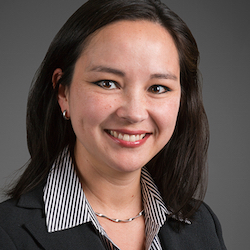
The past decade has seen dramatic shifts in the way wellness services are provided to older adults.
Outdated senior living communities are repositioning themselves to stay competitive, and many of them are revamping their wellness programs to align with contemporary views on holistic, person-centered care. Many newer wellness programs are updating programming and facilities to serve the senior living industry, but plenty of room still exists in the marketplace for innovation, and there is a unique opportunity to grow beyond the senior living niche market.
Defining wellness
What is wellness? For most of history, simply not being sick was considered the foundation of “wellness.” In recent years, however, we have come to realize that it is more advantageous to adopt a proactive approach to life by staying healthy and fit, rather than waiting to treat the symptoms of illness and aging as they arise.
According to the latest thinking, wellness is a multi-dimensional and dynamic measurement. It is a collection of metrics derived from recognizing that fitness of a person’s body, mind and spirit all are equally important. Likewise, when considering the eight dimensions of wellness — physical, emotional, intellectual, spiritual, social, occupational, environmental and financial — and how best to achieve an equitable balance, it is important to realize that working out in the gym is only a small component of what it means to be well. With so many factors contributing to a person’s overall state of wellbeing, optimizing wellness means something different to everyone.
For senior living providers, the need to accommodate each person’s pursuit of their individual wellness goals allows wellness services to be provided in a variety of ways. Changing market demands, longer life expectancies, unique partnerships, financial considerations and advances in technology all invite the creation of new wellness models as providers look for ways to attract increasingly more educated and sophisticated consumers. In competitive markets, a life plan community (also known as a continuing care retirement community or CCRC) with a forward-thinking wellness management program can serve as a critical differentiator from other local options.
An emerging solution
One emerging solution in the realm of wellness management is a new building typology called the center for healthy living, or CHL. The CHL sets itself apart from the traditional community or fitness center by “exercising” all eight dimensions of wellness.
A typical CHL contains spaces for preventive care medical appointments, cognitive assessments, continuing education classes/lectures, healthy dining, social encounters, arts and cultural programs, physical fitness training, and spa and beauty treatments. Currently located primarily on life plan community campuses, these facilities often will group all program areas into one large building or neighboring buildings for the sake of convenience. When space is unavailable and/or budgets don’t allow for a large expenditure at once, however, providers increasingly are turning to strategic partnerships or are developing non-centralized facilities to provide the many services of a CHL across a wider footprint.
CHL in practice
A 2016 Perkins Eastman study on the evolution and future of CHLs looked at more than two dozen built and in-development facilities across the United States. The Springs at Monarch Landing in Naperville, IL, and The Summit at Rockwood South Hill in Spokane, WA, are two key highlights from the study, positioned as ideal case studies of two recently completed CHLs. The architecture and programming at both of these communities represent the breadth of program offerings desired to address all eight dimensions of wellness, as well as the understanding that successful wellness programs are created through a combination of well-designed physical spaces, engaging programs and strong executive leadership.
The Summit at Rockwood South Hill is perhaps the newest CHL to open in the United States. The community held its grand opening in October.
As part of a larger repositioning project, the CHL consists of approximately 35,000 square feet of light-filled, energetic and environmentally sustainable construction. The Summit describes itself as “more like a small village or a college campus, where people are empowered to live a life that is active, exciting and creative.” Boasting three restaurants, an espresso café, sky view lounge, convenience store, library, arts and cultural facilities, multiple fitness centers for both classes and fitness training, indoor pool, spa, classrooms and a worship space, The Summit packs a lot of program spaces into its footprint.
In addition to the premier amenity spaces at the Summit, Rockwood Retirement Living also has implemented a seven-part LiveWell Program. This program is “focused on a holistic approach that enhances vitality and quality of life.” With robust programs in place such as an in-house television broadcast group, recycling committee and mind aerobics team, Rockwood recognizes that nurturing the whole person is essential to achieving wellness.
Saint John’s on the Lake in Milwaukee, WI, is an urban life plan community located adjacent to Lake Michigan. Opened in 2011, the 21-story apartment tower was built as an addition to a pre-existing 10-story residential building. This early CHL almost could be considered an enhanced town center concept, and it occupies the ground floor of the community to connect the new and existing construction.
With a vibrant cultural arts component, including an art gallery that is affiliated with the Museum of Wisconsin Art; multiple dining venues; fitness center; indoor pool; classrooms; library; gardens and chapel, Saint John’s on the Lake undeniably has succeeded in integrating itself into the surrounding neighborhood. Multiple pieces of the town center often are open to the wider neighborhood, and Saint John’s residents are encouraged to venture out into the city to take advantage of the many benefits that come from living in a downtown neighborhood.
Lifestreams is the name of Saint John’s personal wellness program, and its stated purpose is to support the comprehensive health of every individual by nurturing all the dimensions of wellness. At Saint John’s on the Lake, a multi-faceted approach to wellness management helps residents to improve the quality of their lives while strengthening their minds, bodies and spirits.
A wide variety of benefits
Survey responses from Perkins Eastman’s CHL study indicate that communities with CHLs realize a wide variety of benefits, from improved quality of life for residents, to a stronger sense of community through social engagement, to improved physical health outcomes.
For life plan communities, the CHL provides benefits, too: as a marketing tool for new prospective residents; as a growth opportunity through the formation of partnerships with outside businesses, universities, faith and/or arts groups; and even as a staff recruitment and retention tool when community employees are permitted to enjoy the facility.
As the pursuit of whole-person wellness becomes ever more intrinsic in the United States, communities lacking robust wellness amenities and programs quickly will find themselves sidelined. Industry experts agree that life plan communities as they have existed up to now will need to reinvent themselves to stay extant, and CHLs may provide a major means by which they are able to thrive into the next generation.
For disruptors looking for a way to bridge the gap between the senior living, healthcare, hospitality and education sectors, the CHL presents an exciting opportunity to innovate. With its wide-ranging program offerings, the CHL can be relevant to everyone regardless of age, race or sex, and the facility itself can be developed in countless configurations to meet the needs of its community. Under the auspices of a visionary developer or group of development partners, the CHL is a goldmine of untapped potential.
Claire Dickey is an associate at Perkins Eastman and is based in the Washington, DC, office of the international design and architecture firm.
McKnight’s Senior Living welcomes guest columns on subjects of value to the industry. Please see our submission guidelines for more information.




